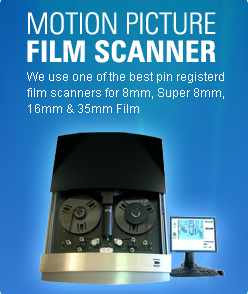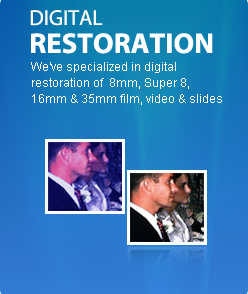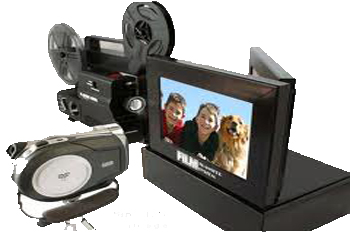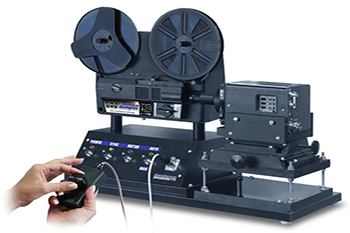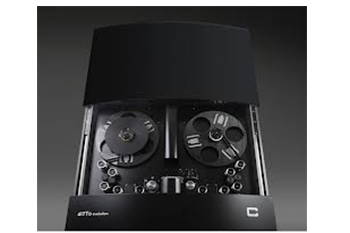
Film Conversion Equipment
Film Scanning and Film Transfer Equipment Types
The type of film scanning machine used for your 8mm, Super 8 or 16mm film conversion will have as much of an impact on the quality you receive as the resolution of the scan itself will. For example, if you wanted to digitize a photograph and tried doing it two different ways. You first put the photograph down on a table and took a picture of it using your smart phone or camera. Then you took the picture and scanned it using a flatbed scanner. If you compare the two side by side on your computer it will become really obvious that the flatbed scanner produced a digital image as good as the photograph. However, the picture you took with your phone or camera does not look close to the quality of the original photograph.
The same goes for scanning your 8mm, Super 8 or 16mm film. The real-time and frame by frame machines below are using a camcorder to take a picture of your film. The motion picture film scanner and Datacine machine are scanning the film. The results will be significantly different.
Film Conversion Equipment |
|
Real Time
|
|
Frame by Frame
|
|
Professional Film Scanners
|
|
So, at this point you’ve learned that film transfers can capture at standard definition (480 lines), high definition (1080 lines) or 2K (1556 lines). You’ve also learned about the 3 different types of film transfers being used today. In order from least to best quality we have:
The film transfer processes above are the basics types and do not include any restoration by themselves. Restoration comes in many different capabilities from color and exposure correction, to grain elimination, to stabilization
Gulfport Fun Facts: Gulfport, Mississippi, in Harrison county, is 65 miles NE of New Orleans, Louisiana. The city is considered part of the Biloxi-Gulfport-Pascagoula metropolitan area. Gulfport has a population of 71,127. Gulfport, Mississippi, in Harrison county, is 65 miles NE of New Orleans, Louisiana.
Mississippi Fun Facts: Mississippi joined the Union as the 20th state in 1817 and gets its name from the Mississippi River, which forms its western border. Early inhabitants of the area that became Mississippi included the Choctaw, Natchez and Chickasaw. Spanish explorers arrived in the region in 1540 but it was the French who established the first permanent settlement in present-day Mississippi in 1699. During the first half of the 19th century, Mississippi was the top cotton producer in the United States, and owners of large plantations depended on the labor of black slaves.
